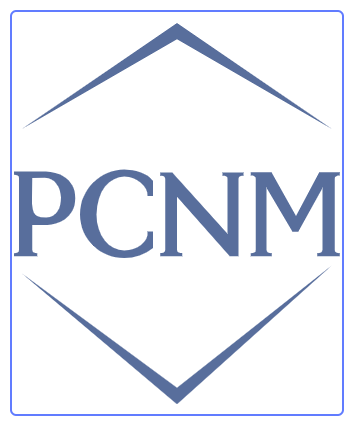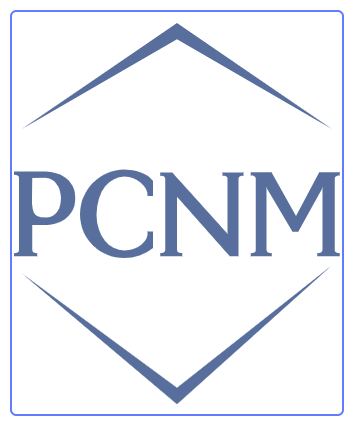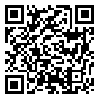
Preventive Care in Nursing and Midwifery Journal

Volume 15, Issue 3 (10-2025)
PCNM 2025, 15(3): 0-0 |
Back to browse issues page
Ethics code: مروری
Download citation:
BibTeX | RIS | EndNote | Medlars | ProCite | Reference Manager | RefWorks
Send citation to:



BibTeX | RIS | EndNote | Medlars | ProCite | Reference Manager | RefWorks
Send citation to:
Shirozhan S, Shoja M, Metanat F, Motie M. Functional Models in Rehabilitation Nursing Care: A Scoping Review. PCNM 2025; 15 (3)
URL: http://nmcjournal.zums.ac.ir/article-1-947-en.html
URL: http://nmcjournal.zums.ac.ir/article-1-947-en.html
, mahdiehmotie71@gmail.com
Abstract: (180 Views)
Background: Nursing models improve care quality by providing structured guidance. Functional nursing models are particularly crucial for meeting the diverse needs of patients with disabilities and addressing the complexities of rehabilitation nursing.
Objective: This study aimed to introduce rehabilitation nursing models by analyzing existing research in the field.
Methods: This scoping review was conducted using the five-step approach developed by Arksey and O’Malley. English keywords such as “model,” “theory,” “nursing care,” “nursing practice,” and “rehabilitation” were used to search databases including PubMed, Cochrane, Web of Science, Scopus, Embase, ProQuest, and Google Scholar in September 2024. English-language articles and theses were reviewed, excluding those without full text or based on speeches. After manual screening and selection, relevant studies were extracted, summarized, and analyzed.
Results: Out of 671 identified articles, 38 were reviewed in full, and 17 met the inclusion criteria. Among these, 29.4% were published within the past five years, 41.1% appeared in rehabilitation journals, and 76.5% applied models to rehabilitation patients. Fourteen nursing models were identified, nine from general nursing and five specific to rehabilitation nursing. The evidence levels were primarily II (29.4%) and IV (47.5%).
Conclusion: The findings emphasize the significance of theoretical models in rehabilitation nursing. Utilizing frameworks such as Mauk’s Poststroke Recovery Model, Roy’s Adaptation Model, Bandura’s Self-Efficacy Theory, and rehabilitation-specific models like the Geriatric Rehabilitation Nursing Model and the Super-Link System promotes holistic, patient-centered care, fosters interdisciplinary collaboration, and enhances health outcomes and quality of life for patients and their families.
Objective: This study aimed to introduce rehabilitation nursing models by analyzing existing research in the field.
Methods: This scoping review was conducted using the five-step approach developed by Arksey and O’Malley. English keywords such as “model,” “theory,” “nursing care,” “nursing practice,” and “rehabilitation” were used to search databases including PubMed, Cochrane, Web of Science, Scopus, Embase, ProQuest, and Google Scholar in September 2024. English-language articles and theses were reviewed, excluding those without full text or based on speeches. After manual screening and selection, relevant studies were extracted, summarized, and analyzed.
Results: Out of 671 identified articles, 38 were reviewed in full, and 17 met the inclusion criteria. Among these, 29.4% were published within the past five years, 41.1% appeared in rehabilitation journals, and 76.5% applied models to rehabilitation patients. Fourteen nursing models were identified, nine from general nursing and five specific to rehabilitation nursing. The evidence levels were primarily II (29.4%) and IV (47.5%).
Conclusion: The findings emphasize the significance of theoretical models in rehabilitation nursing. Utilizing frameworks such as Mauk’s Poststroke Recovery Model, Roy’s Adaptation Model, Bandura’s Self-Efficacy Theory, and rehabilitation-specific models like the Geriatric Rehabilitation Nursing Model and the Super-Link System promotes holistic, patient-centered care, fosters interdisciplinary collaboration, and enhances health outcomes and quality of life for patients and their families.
Type of Study: Review Articels |
Subject:
Nursing
Received: 2024/12/28 | Accepted: 2025/10/2 | Published: 2025/10/2
Received: 2024/12/28 | Accepted: 2025/10/2 | Published: 2025/10/2
References
1. Meleis AI. Theoretical Nursing: Development and Progress. Wolters Kluwer Health/Lippincott Williams & Wilkins; 2011. p. 470-480.
2. Arif S, Ali A, Hussain N. Nursing Theories: Foundation of Nursing Profession. i-Manager's Journal on Nursing. 2019;9(4):45. [https://doi.org/10.26634/jnur.9.4.16643]
3. Younas A, Quennell S. Usefulness of nursing theory-guided practice: an integrative review. Scandinavian Journal of Caring Sciences. 2019;33(3):540-55. [https://doi.org/10.1111/scs.12670] [PMID]
4. Arif S, Nasir A. Experiences of BSN students regarding application of nursing theories at clinical. Journal of Liaquat University of Medical & Health Sciences. 2019;18(3):241-4. [https://doi.org/10.22442/jlumhs.191830635]
5. Veo P. Concept mapping for applying theory to nursing practice. Journal for Nurses in Professional Development. 2010;26(1):17-22. [https://doi.org/10.1097/NND.0b013e3181cc2d6f] [PMID]
6. Kitson AL. The fundamentals of care framework as a point-of-care nursing theory. Nursing Research. 2018;67(2):99-107. [https://doi.org/10.1097/NNR.0000000000000271] [PMID]
7. Closson BL, Mattingly LJ, Finne KM, Larson JA. Telephone follow-up program evaluation: application of Orem's self-care model. Rehabilitation Nursing Journal. 1994;19(5):287-92. [https://doi.org/10.1002/j.2048-7940.1994.tb00824.x] [PMID]
8. Wang R, Duan G, Xu H, Wu Y, Su Y, Li J, et al. Analysis on the effect of the rehabilitation intervention-centered targeted nursing model on cardiac function recovery and negative emotions in patients with acute myocardial infarction. Journal of Healthcare Engineering. 2022;2022(1):1246092. [https://doi.org/10.1155/2022/1246092] [PMID]
9. Mohammadi E, Abbasi K, Saadati M. Barriers to implementation of nursing theories in clinical practice from the perspective of nurses. Iranian Journal of Nursing Research. 2015;10(1):13-24. [http://ijnr.ir/article-1-1477-en.html]
10. Pashaeypoor S, Baumann SL, Sadat Hoseini A, Cheraghi MA, Chenari HA. Identifying and overcoming barriers for implementing Watson's human caring science. Nursing Science Quarterly. 2019;32(3):239-44. [https://doi.org/10.1177/0894318419845396] [PMID]
11. Shirozhan S, Arsalani N, Seyed Bagher Maddah S, Mohammadi-Shahboulaghi F. Barriers and facilitators of rehabilitation nursing care for patients with disability: a qualitative study. Frontiers in Public Health. 2022;10:931287. [https://doi.org/10.3389/fpubh.2022.931287] [PMID]
12. Arksey H, O'Malley L. Scoping studies: towards a methodological framework. International Journal of Social Research Methodology. 2005;8(1):19-32. [https://doi.org/10.1080/1364557032000119616]
13. Levac D, Colquhoun H, O'Brien KK. Scoping studies: advancing the methodology. Implementation Science. 2010;5:1-9. [https://doi.org/10.1186/1748-5908-5-69] [PMID]
14. Wu Z, Xu J, Yue C, Li Y, Liang Y. Collaborative Care Model-Based Telerehabilitation Exercise Training Program for Acute Stroke Patients in China: A Randomized Controlled Trial. Journal of Stroke and Cerebrovascular Diseases. 2020;29(12):105328. [https://doi.org/10.1016/j.jstrokecerebrovasdis.2020.105328] [PMID]
15. Li N, Wang J, Zheng M, Ge Q. Application Value of Rehabilitation Nursing in Patients with Stroke Based on the Theory of Interactive Standard: A Randomized Controlled Study. Evidence-Based Complementary and Alternative Medicine. 2021;2021:9452765. [https://doi.org/10.1155/2021/9452765] [PMID]
16. Otu M, Karagozoglu S. Nursing Care Based on Health Promotion Model in Patients with Overlap Syndrome within the Scope of Pulmonary Rehabilitation: Case Report. International Journal of Caring Sciences. 2021;14(3):2046-2054. [https://internationaljournalofcaringsciences.org/docs/55_otu_special_14_3.pdf]
17. Farias MS, Silva LdFd, Brandão MAG, Guedes MVC, Pontes KMdA, Lopes ROP. Medium Reach Theory for Nursing in Cardiovascular Rehabilitation. Revista Brasileira de Enfermagem. 2021;74(3):e20190718. [https://doi.org/10.1590/0034-7167-2019-0718] [PMID]
18. Iannicelli AM, De Matteo P, Vito D, Pellecchia E, Dodaro C, Giallauria F, et al. Use of the North American Nursing Diagnosis Association Taxonomies, Nursing Intervention Classification, Nursing Outcomes Classification, and NANDA-NIC-NOC Linkage in Cardiac Rehabilitation. Monaldi Archives for Chest Disease. 2019;89(2). [https://doi.org/10.4081/monaldi.2019.1060] [PMID]
19. Piazza D, Foote A. Roy's Adaptation Model: A Guide for Rehabilitation Nursing Practice. Rehabilitation Nursing. 1990;15(5):254-259. [https://doi.org/10.1002/j.2048-7940.1990.tb01488.x] [PMID]
20. Shoja M, Dalvandi A, Tafakhori A, Sarraf P, Kazemi R, Ebrahimpour Z, et al. Implication of the Mauk Nursing Intervention Model on Coping Strategies of Stroke Survivors. Iranian Rehabilitation Journal. 2015;13(2):51-56. [http://irj.uswr.ac.ir/article-1-392-en.html]
21. Dalvandi A, Khankeh H, Kazemi R, Tafakhori A, Sarraf P, Biglarian A, et al. Implication of the Mauk Nursing Rehabilitation Model on the Adjustment of Stroke Patients. Iranian Rehabilitation Journal. 2014;12(4):6-10. [http://irj.uswr.ac.ir/article-1-391-en.html]
22. Mauk KL. Nursing Interventions within the Mauk Model of Poststroke Recovery. Rehabilitation Nursing Journal. 2006;31(6):257-264. [https://doi.org/10.1002/j.2048-7940.2006.tb00022.x] [PMID]
23. Ragsdale D, Yarbrough S, Lasher AT. Using Social Support Theory to Care for CVA Patients. Rehabilitation Nursing. 1993;18(3):154-161. [https://doi.org/10.1002/j.2048-7940.1993.tb00744.x] [PMID]
24. Cormack C, Hillier LM, Anderson K, Cheeseman A, Clift J, Fisher M-J, et al. Practice Change: The Process of Developing and Implementing a Nursing Care Delivery Model for Geriatric Rehabilitation. Journal of Nursing Administration. 2007;37(6):279-286. [https://doi.org/10.1097/01.NNA.0000277719.79876.ec] [PMID]
25. Chen HY, Boore JR. Establishing a Super-Link System: Spinal Cord Injury Rehabilitation Nursing. Journal of Advanced Nursing. 2007;57(6):639-648. [https://doi.org/10.1111/j.1365-2648.2006.04160.x] [PMID]
26. Li L, Dai J-x, Xu L, Huang Z-x, Pan Q, Zhang X, et al. The Effect of a Rehabilitation Nursing Intervention Model on Improving the Comprehensive Health Status of Patients with Hand Burns. Burns. 2017;43(4):877-885. [https://doi.org/10.1016/j.burns.2016.11.003] [PMID]
27. Jeng C, Braun LT. Bandura's Self-Efficacy Theory: A Guide for Cardiac Rehabilitation Nursing Practice. Journal of Holistic Nursing. 1994;12(4):425-436. [https://doi.org/10.1177/089801019401200411] [PMID]
28. Jensen K, Banwart L, Venhaus R, Popkess-Vawter S, Perkins SB. Advanced Rehabilitation Nursing Care of Coronary Angioplasty Patients Using Self-Efficacy Theory. Journal of Advanced Nursing. 1993;18(6):926-931. [https://doi.org/10.1046/j.1365-2648.1993.18060926.x] [PMID]
29. Routasalo P, Arve S, Lauri S. Geriatric Rehabilitation Nursing: Developing a Model. International Journal of Nursing Practice. 2004;10(5):207-215. [https://doi.org/10.1111/j.1440-172X.2004.00480.x] [PMID]
30. Roy C, Roberts SL. Theory Construction in Nursing: An Adaptation Model. 1981. p. 31-48. [https://books.google.com/books/about/Theory_Construction_in_Nursing.html?id=vwJtAAAAMAAJ]
31. Pender NJ. Health Promotion Model Manual. 2011. [https://www.scirp.org/reference/referencespapers?referenceid=2406627]
Send email to the article author
| Rights and permissions | |
 |
This work is licensed under a Creative Commons Attribution-NonCommercial 4.0 International License. |



